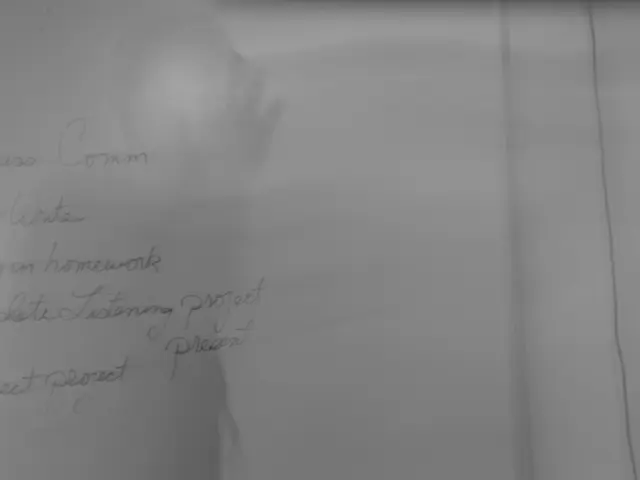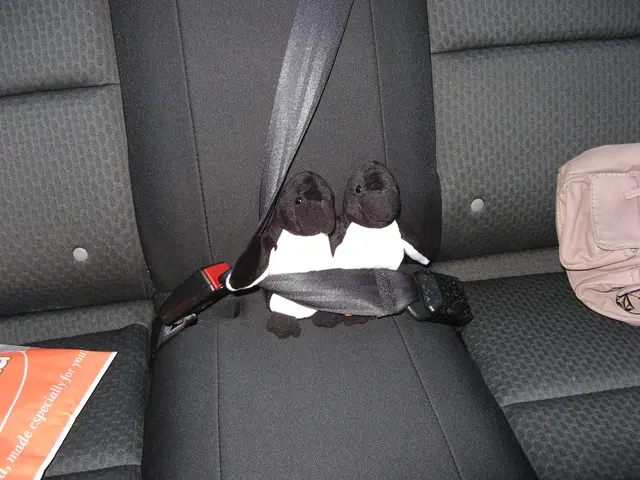Title: Navigating the Challenge of Hybrid Warfare in Europe Under Legal Constraints
Looking back, Estonian officials are confident that they handled the May 2024 buoy incident as well as it could be handled under the circumstances. The incident involved Russian forces stealthily removing 25 of 50 buoys laid down by Estonia to mark the border, as seen on surveillance footage by Estonian border guards. "Moscow is testing our reaction," director general of the Estonian police and border guard Egert Belitšev explains to me, "When we don’t react, they go further."
The tiny Baltic nation, with a population of 1.4 million, has long seen itself as a buffer between Russia and the West, and Estonians are no strangers to Russia's "hybrid" aggression. In response to the incident, Estonia's foreign minister summoned Moscow's top diplomat and made it clear in no uncertain terms that the theft was unacceptable. But Estonians are wary of provoking a larger conflict with Russia, and their primary objective is to keep their own people safe.
The increase in hybrid attacks, including cyberattacks, disinformation, bomb threats, arson, and even an assassination attempt, has prompted Europe to reevaluate its approach to dealing with Russia. While Western countries value the rule of law, it's unclear if the tools at their disposal are sufficient to deter Russia from further aggression.
One of the most alarming trends is the use of hybrid attacks to test Europe's defenses, such as the sabotage of underwater cables and a gas pipeline in the Baltic Sea. But Moscow's suspected interference in elections in Georgia, Moldova, and Romania is particularly concerning, according to former Estonian intelligence officer Marek Kohv. "Terrorism is nothing compared to a stolen presidency."
Hybrid attacks are attractive for Russia, as they are cheap, easy to orchestrate, and low-risk. Attacks are often carried out by civilians, many of whom are recruited online and paid in cryptocurrency. This makes it difficult to trace the attacks to their origins, and unless a nation is prepared to retaliate with force, it can be challenging to respond effectively.
The challenge for Western countries is to find a way to deter Russia without crossing into territory that could result in an open conflict. Estonia is one of the countries that is acutely aware of the threat, but even nations with a clear understanding of the situation find it challenging to respond effectively.
In response to this evolving threat, Europe is taking several steps to strengthen its defenses, including:
- Enhanced Cybersecurity Measures: Implement proactive cyber defense measures, such as allowing sanctioned hackers to infiltrate servers to neutralize cyber threats. Develop robust cybersecurity frameworks and foster international collaborations to counter cyberattacks and disinformation effectively.
- Disinformation Countermeasures: Promote fact-checking and media literacy programs to help citizens distinguish between credible and fake news. Implement regulatory measures to curb the spread of disinformation and increase penalties for spreading false information.
- Economic Pressure and Sanctions: Impose economic sanctions on entities and individuals involved in hybrid warfare activities. Use financial deterrence mechanisms to disrupt the economic activities of entities engaged in hybrid warfare.
- Political and Legal System Exploitation Prevention: Strengthen democratic institutions and legal systems to prevent exploitation by foreign actors. Promote transparency and accountability in government and public institutions to prevent the spread of disinformation and manipulation.
- Public Resilience and Awareness: Launch public awareness campaigns to educate citizens about the risks of hybrid warfare and the importance of cybersecurity. Engage the community to build a stronger and more robust security culture.
- Interoperability and Information Sharing: Enhance interoperability among member states by developing cybersecurity solutions compatible with NATO protocols. Establish information-sharing mechanisms that respect state sovereignty while enabling the rapid detection of cyber threats.
- Coordinated European Response: Implement a unified European approach to counter hybrid threats. Develop a joint strategy to effectively combat sabotage and hybrid warfare, and invest in resilience.
Ultimately, the West must find a way to deter Russia without compromising its values and principles. By taking a coordinated approach and implementing a range of measures to strengthen defenses, Western countries can become better prepared to meet the challenges posed by Russia's hybrid aggression.
- Russia's shadow fleet, suspected of being involved in underwater cable sabotage and pipeline incidents in the Baltic Sea, operates in a gray zone, making it challenging for Europe to respond effectively.
- Estonia, being a border country between Russia and Europe, is especially vigilant against Russian gray zone tactics, such as the infiltration of its political system through disinformation campaigns, as seen in Ukraine.
- Despite being a member of NATO and the European Union, Estonia and other Eastern European nations continue to navigate the delicate balance between maintaining good relations with Russia and defending against potential hybrid attacks, a challenge that extends beyond their borders into the heart of Europe.








